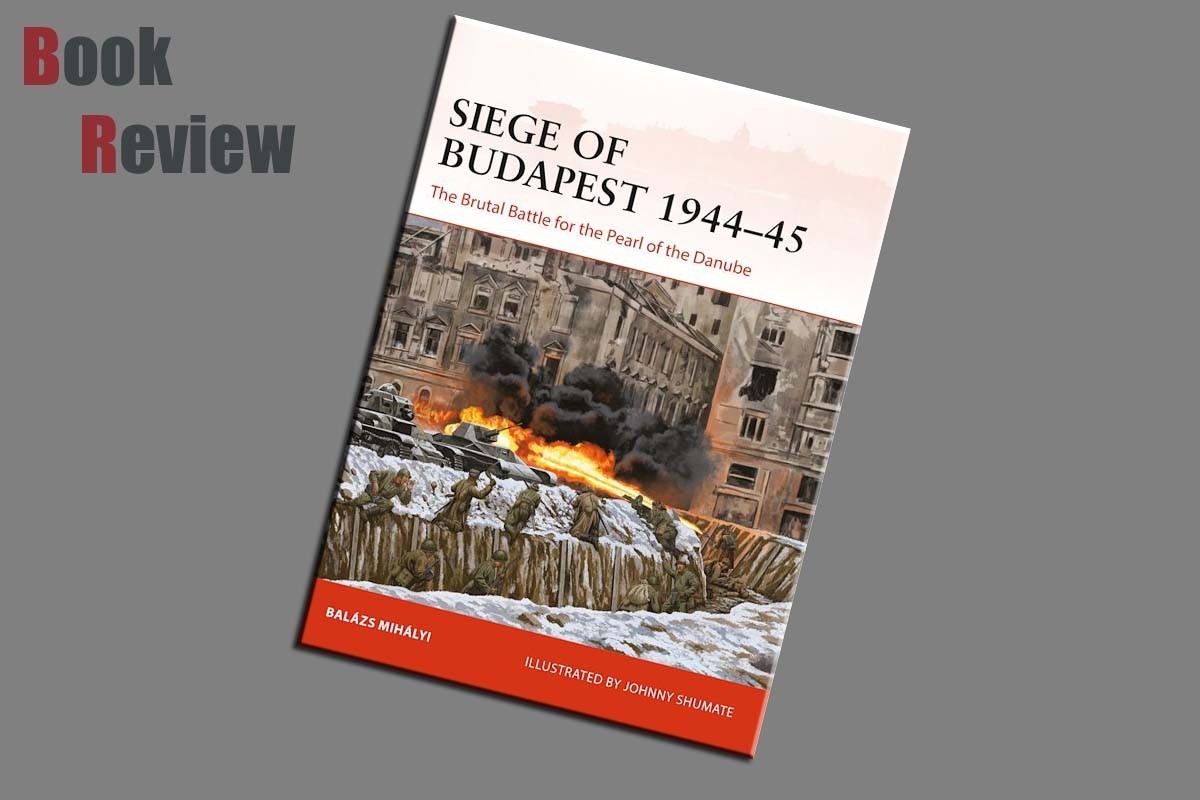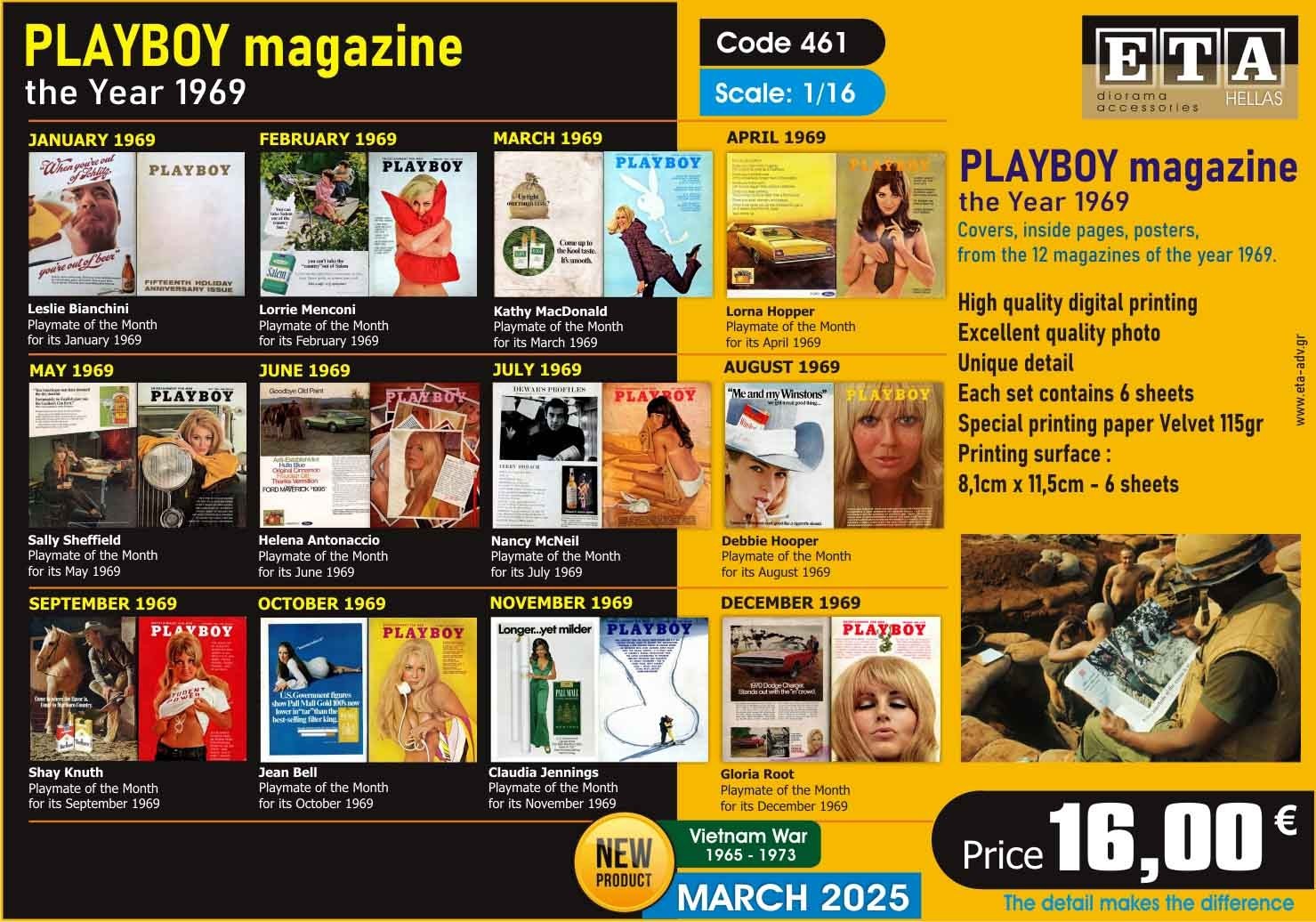
Review
I'll get this out of the way early, the artwork is very average for an Osprey title, I've seen better (as per cover). Enough said.
The actual book itself is very worthwhile, and sets out the battle for, and subsequent siege of, Budapest really well. The text is well supported by maps, which give you a very good idea of how difficult this battle was for both sides; I particularly liked the 3D maps, these convey the terrain in good detail, and just how difficult it would have been, fighting here for weeks at a time, see examples below.
The narrative moves at a quick pace, and covers off the main thrust, if you will, of the ebb and flow of the fighting that makes up the battle for Budapest. An example that is worth quoting at length, page 58, in discussing Operation Konrad, " Nevertheless, on 1 January, at 1930hrs, the 3rd SS-Panzer Division and the 711th Infantry Division crossed the Danube and created a bridgehead in the area of Nyergesujfalu and Sutto. Also, the 5th SS-Panzer Division attacked from Tata. This comprised the main thrust of the offensive. The assault surprised the Soviet 31st Guards Rifle Corps: the Germans broke through its lines and advanced 20-30km deep, possibly also surprising other Soviet forces still being deployed. The Germans bypassed and surrounded the [anti-tank] concentrations. However, due to bad weather, the German 4th Air Fleet was onl able to carry out 100 mission in support of the attack on this day. " There is a lot there not mentioned, but you get the gist of the moment, and it is clear in the accompanying map.
A small sidenote to this, when discussing Op. Konrad is found on p.57, "Two plans were drawn up for the relief effort, without Hitler's interference." And that Konrad was selected over the other plan, Paula, because Konrad required 900m3 less fuel.
Contents
Orders of battle
OPPOSING PLANS
Axis
Soviet and Romanian
THE SIEGE OF BUDAPEST
The first Soviet attack: 29 October–6 November 1944
Budapest surrounded: 11 November–24 December 1944
Taking Pest: 24 December 1944–18 January 1945
German relief operations: Konrad I–III
Buda: 19 January–10 February 1945
Breakout: 11–13 February 1945
AFTERMATH
THE BATTLEFIELD TODAY
BIBLIOGRAPHY
INDEX
Conclusion
The images in the book are clear, relevant, and plentiful, if a little small; the images cover Axis and Allied subjects, as well as the subject city itself.
'Aftermath' offers a little by way of analysis, ranging from a comparison to the battle of Stalingrad, a short focus on how well the Germans did against superior Soviet forces (the Soviets lost 60 000 troops and 900 tanks, against German losses of 21 000 and 300 respectively) the suffering of the civilian population, and matters in between. The salient point is mentioned, but not discussed to any length, a paragraph on page 92, that is that fight for Budapest was almost irrelevant from a military point of view as Transdanubia was a strategically significant region for its oil, which the Germans continued to control right up to March 1945, but the Soviets failed to recognize this, who's focus was on creating a path to Vienna and then Berlin.
A good read, easily recommended for its explanation of the brutal battle for the pearl of the Danube.
Words,
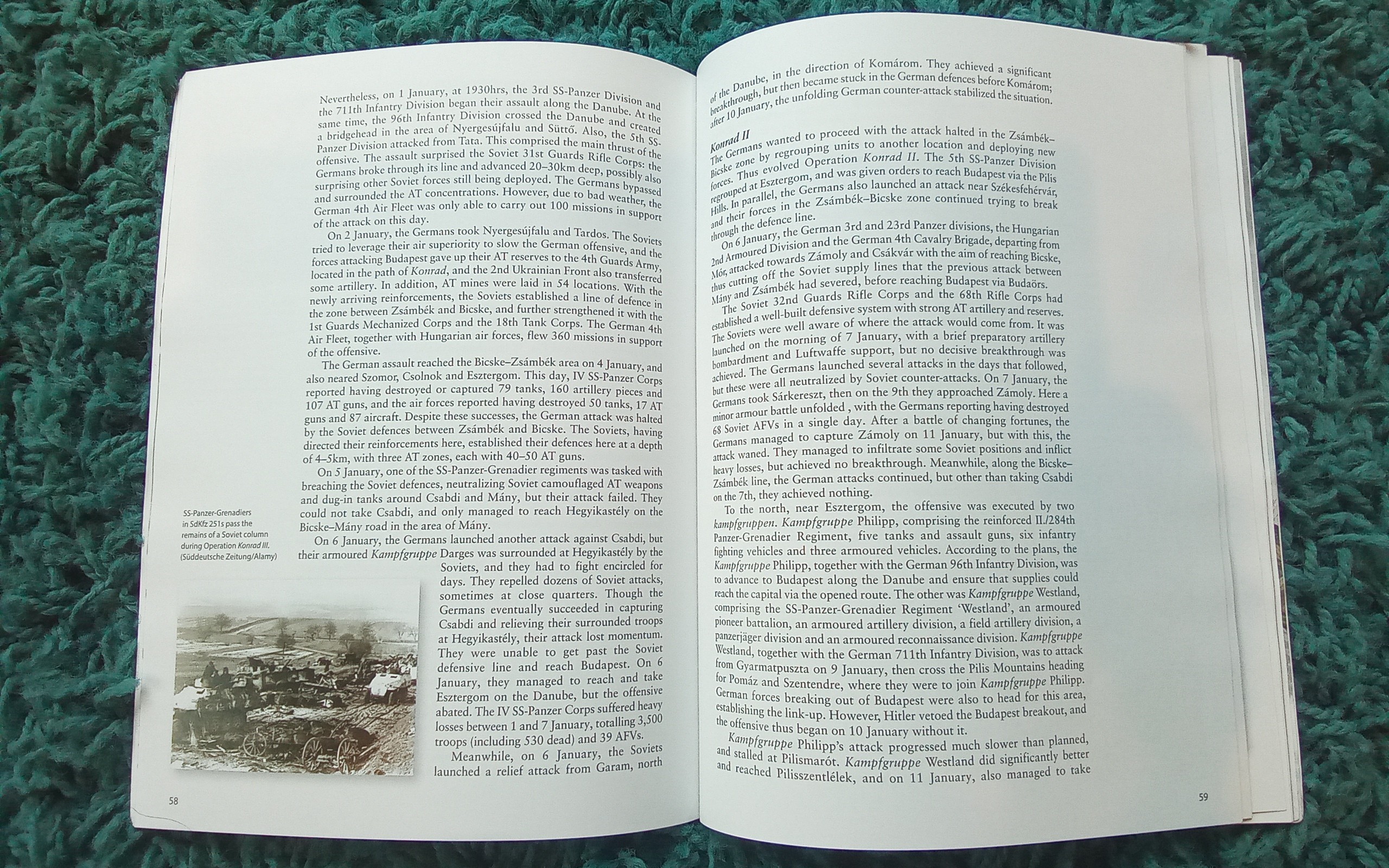
Map, gives you a sense of how chaotic the fighting was.
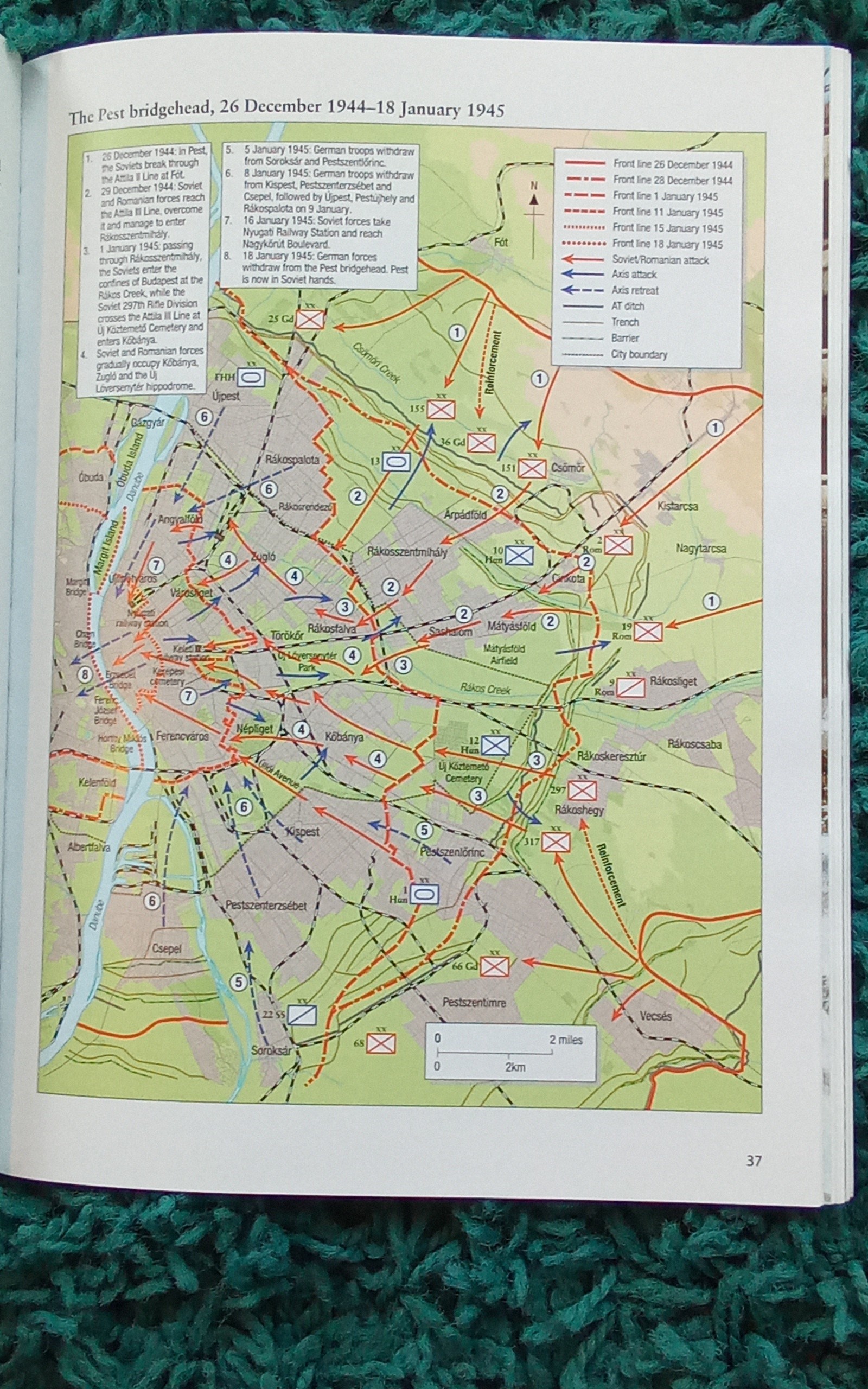
Whoops, modelling inspiration.
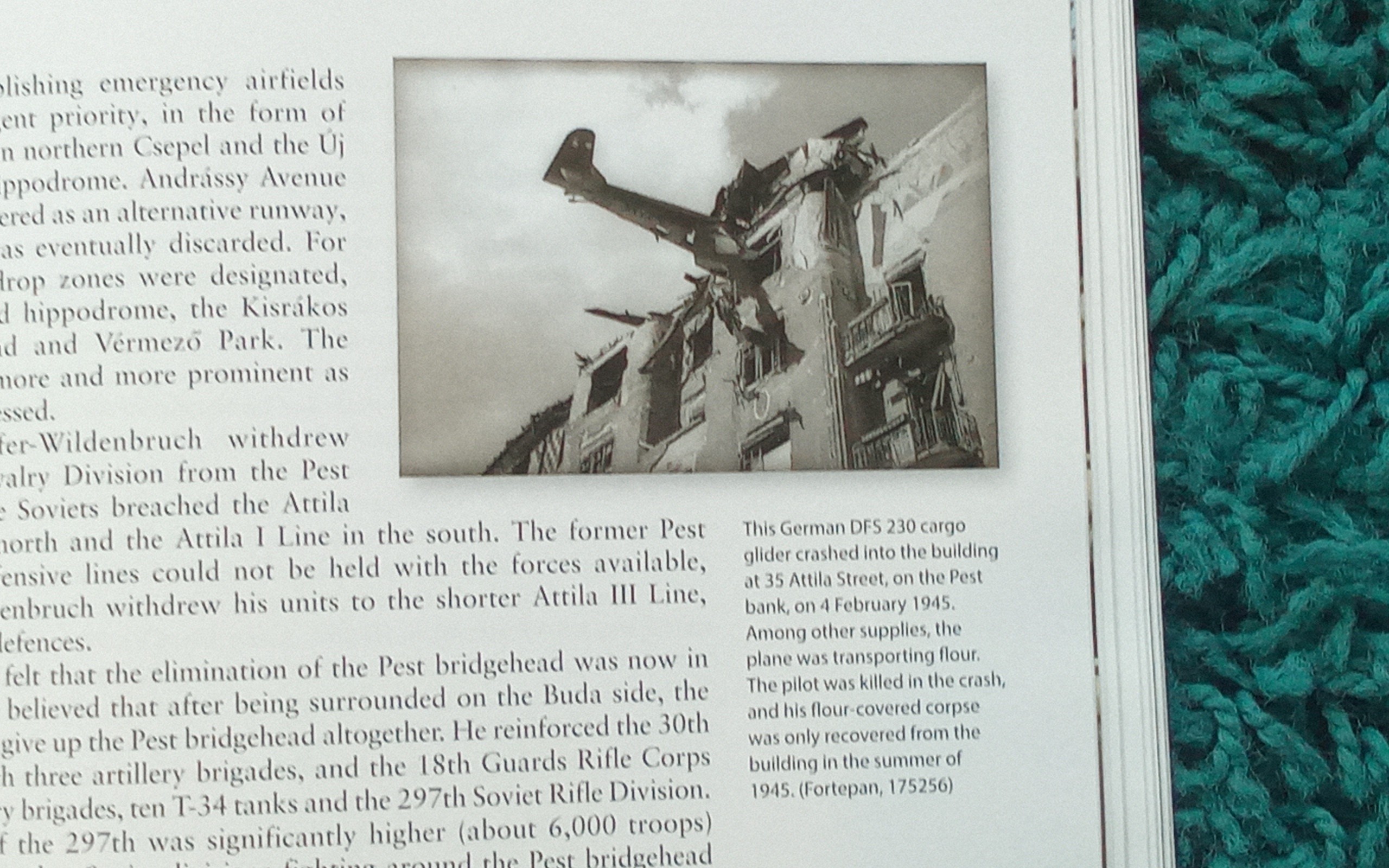
Desperate times, desperate measures.

Downtown fast food.
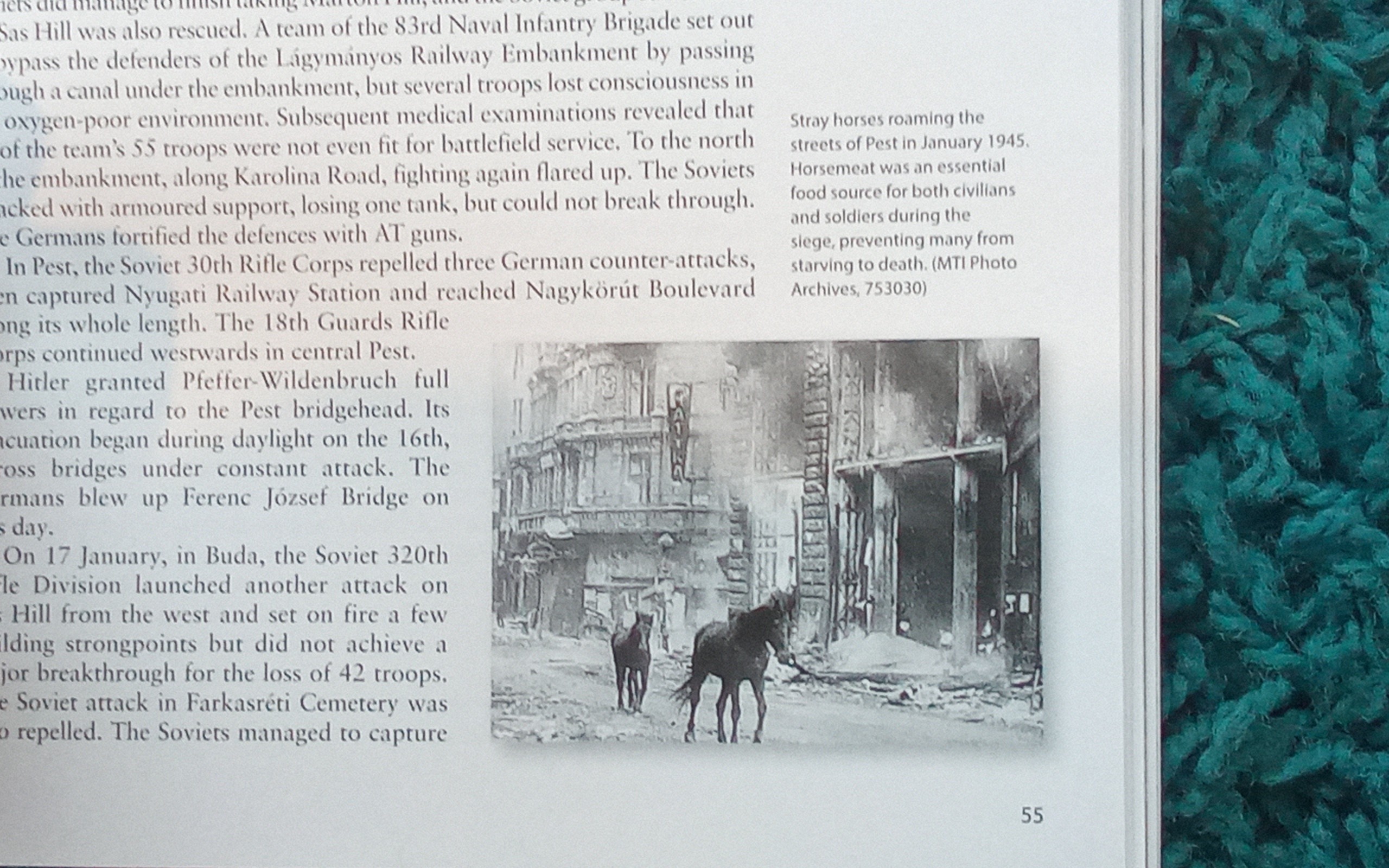
Operation Konrad II, 7-11 January 1944.

152mm in direct fire role. Bad news.












